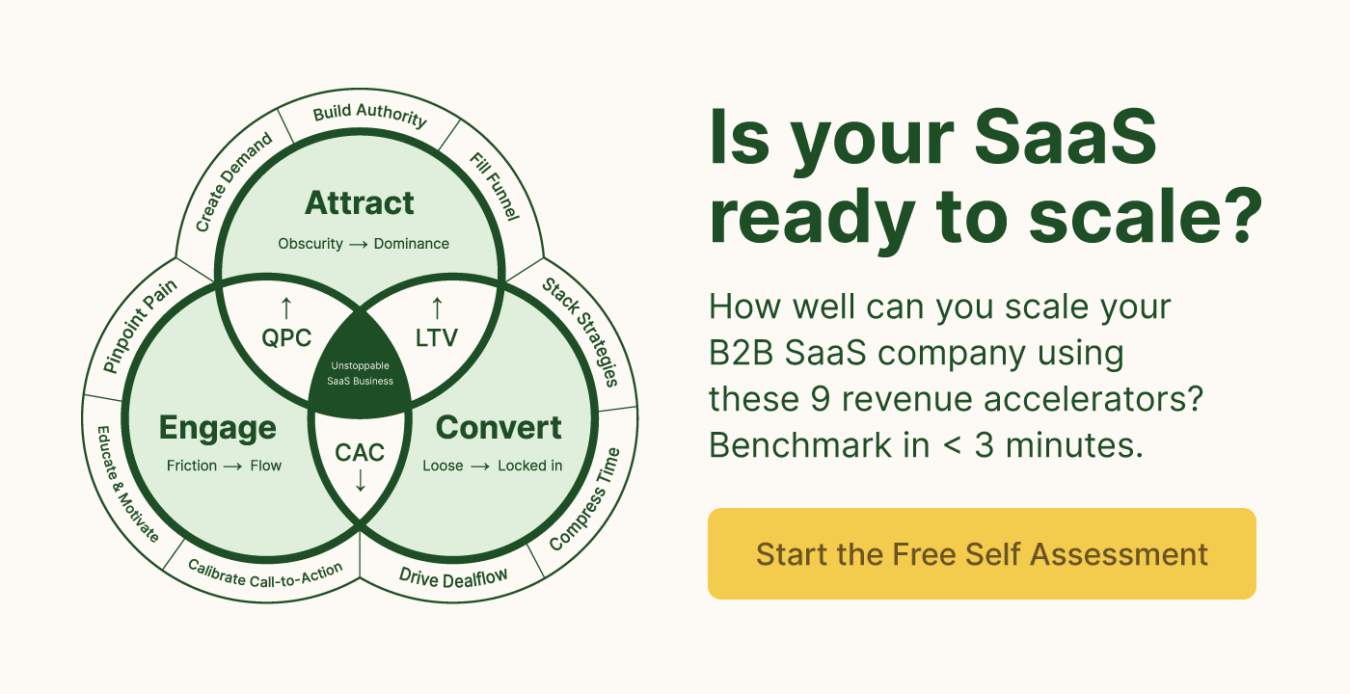How we run PPC for developer focused SaaS products
Last updated: May 30th, 2022
Marketing to the developer community is a notoriously difficult task for B2B SaaS companies.
Some of the biggest challenges include:
- Choosing the right channels to reach them, since they aren’t as active in common social media platforms such as Facebook or LinkedIn (opting to spend more of their time on platforms such as StackOverflow and Reddit).
- Creating offers that appeal to them, since they are unlikely to respond to marketing that asks them to buy up front.
- Creating messaging that actually resonates with them and compels them to take action.
In addition, many marketers are of the opinion that ads don’t work on developers — essentially removing an otherwise tried and true tool from their toolbelt. So they opt to focus on community engagement and content marketing instead.
The problem with this is that organic community and SEO content plays take time to start working — and not every software company has that kind of time. This is why we think ads can and should still play a key role in developer marketing.
If you’re going to put effort into blogging and creating great content, you shouldn’t be averse to promoting content through paid ads. The key is to choose the right channels to run those ads and then get your offers and messaging right.
In this article, we’ll provide some practical advice for marketing to the development community, then we’ll share the exact channels we’re planning to leverage for our clients in this situation, including specifics about how we plan to approach each.
If you’d like to learn more about how we help B2B SaaS companies grow through paid media and SEO, schedule a Free SaaS scale session.
Some Practical Advice for Marketing to Software Engineers
1. Run your marketing strategy, hooks, and positioning by your own developers to see what they think.
For most SaaS companies, product and marketing teams operate in relative silos. And while this is an issue worth addressing for any software development company, it’s particularly relevant for companies who market to developers.
The reason: When you make products for devs, you have people who fit the qualities of your target audience in house. And it’s a huge missed opportunity if you don’t leverage getting their perspective when developing marketing assets.

It can be as simple as dropping them a line in Slack and asking questions like:
- “What do you think of this ad copy?”
- “Would you click on this?”
- “What would you expect to see on the other side?”
- “Where would you go to consume this content?”
- “Where would you hang out to learn more about ‘XYZ’?”
- “What are some reasons you would sign up or not sign up?”
You get the idea. When people at your own company could be a part of your target market, their feedback can be especially helpful for tailoring marketing efforts.
2. Don’t force demo signups — free, usage-based trials are king.
Largely speaking, developers — who have a hands-on, DIY mentality — don’t want to be walked through or sold a product by some sales person on a demo.
If they’re interested in your software product, what they want is the ability to go in and try it. So trial-based offers in which potential customers can easily dive in and start exploring is the best practice.
Note: For devs who have an inclination toward free, open-source platforms, free (no credit card required) trials work best.
In addition, usage-based, as opposed to time-based trials (e.g., 7 days, 14 days, etc.) also increase the likelihood of trial users converting into customers. Because if they don’t get a chance to use the product within the time-limited trial period, they may never get back around to it. But if they have time, and limits are simply placed on usage, then the time constraints are removed and they can go at their own pace.
3. Avoid hyped-up ad and landing page copy.
“The best software for X.”
“The #1 software for Y.”
“The only platform that does Z.”
These types of claims are likely to turn devs off. Instead, you want to keep your copy as “to the point” and objective as possible.
Headlines and calls to action should be phrased in direct, modest terms. Twilio’s headline and CTA here is a great example of the type of language that appeals to devs:
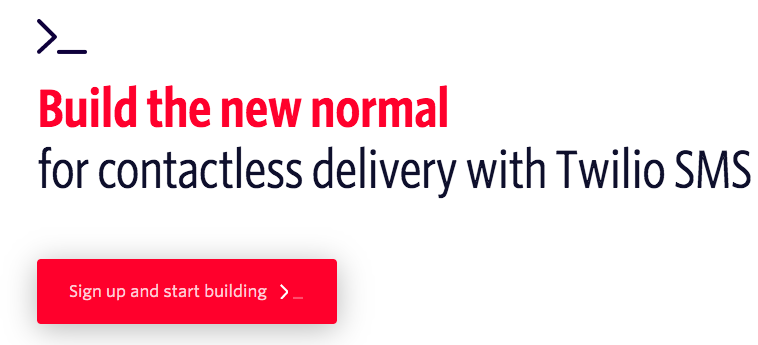
“Build the new normal for contactless delivery with Twilio SMS” strikes a balance between being direct and interesting. Using “new normal” makes it eye catching without being over hyped (and speaks to the time we’re in). And “contactless delivery with Twilio SMS” just objectively describes the product offer.
Then, using “Sign up and start building” for the call to action indicates that users can get started playing right away — which is the preferred experience for devs, as we described above.
4. Make documentation, API status, and change logs easily accessible on your website.
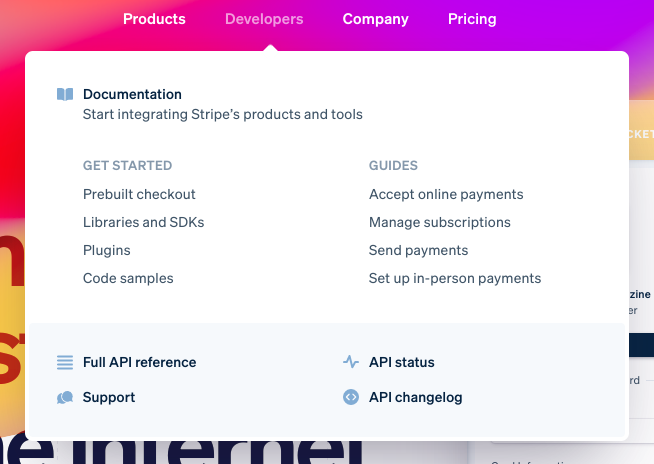
A perfect example from Stripe’s home page.
If you want devs to opt in and get started using your product, you should make the common resources they utilize as easy to access as possible. That means documentation, change logs, and API status pages should all be available for quick reference.
These are the types of things that earn trust with developers. They don’t want to spend a lot of time tinkering with software that keeps going down all the time, so helping them see your status and log pages helps them feel secure that the time invested into learning your product will be time well spent.
But all the website best practices and thoughtful marketing tactics are only going to work if you find customer-channel fit — the optimal channels through which you can reach developers as they navigate the web.
The Channels We’re Testing for Our Clients Who Market to Developers
As we mentioned in the introduction, developers spend more time in different corners of the web than most audiences. While we’d traditionally focus on Google, Facebook, LinkedIn, and Twitter, in the case of marketing to developers, we’ll drop Facebook and LinkedIn and test ads on Quora, StackOverflow, and Carbon Ads instead — to reach developers where they actually hang out and consume content.
What follows are our plans for approaching each channel.
Google Ads
In our article on Google Ads for SaaS, we laid out our exact approach of how we leverage Google Ads for clients using both Google Display Network (GDN) and Google Search Network (GSN). And our plans for Google Ads when it comes to reaching technical audiences are pretty similar to the way we do them for our other SaaS clients.
For Display Network, we’ll use “managed placements” that allow us to choose which specific sites ads get displayed on — that way we can choose sites where we know devs spend time, as opposed to using “automated placements” that could display our ads almost anywhere on the web.
For Search Network, we’ll also use the same approach laid out in our Google Ads strategy. We’ll target keywords based on the problems, use cases, and software categories that our clients’ target audiences would be searching for. For example, if our client makes CICD (continuous integration and continuous deployment) software, we’d want to make sure they’re showing up for that keyword when developers are searching for that kind of tool.
And rather than sending prospects to a traditional SaaS landing page, we might send them to a piece of content instead — keeping in line with our understanding that devs appreciate great content and dislike being sold things. The content could be case studies of our client’s product being used by devs, or detailed guides describing how their product works.
StackOverflow and Quora Ads
From our perspective, the approach to Quora and StackOverflow will be very similar. Essentially, each platform allows people to post questions and answers on all sorts of niche topics, with Quora being more general (i.e., a wide range of dev and non-dev related topics) and StackOverflow being developer-focused.
Both platforms allow you to put in display ads that are in line with particular discussions. So if we were to take the example from above about CICD software, a quick Quora search would reveal a bunch of questions related to continuous integration. For example:
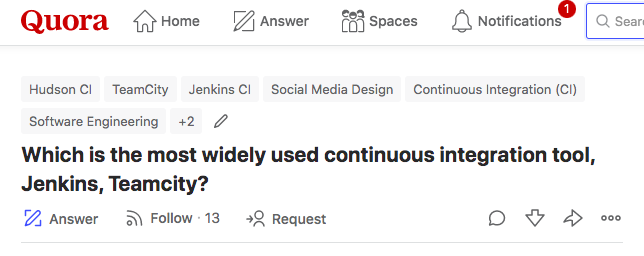
We’d have our client compose and post a thoughtful answer to this question, linking out to relevant content on their site. Then we’d promote that answer to display in relevant places around Quora, based on the tags listed above the question (Hudson CI, TeamCity, etc.) and the related questions on the right-hand side of the page.
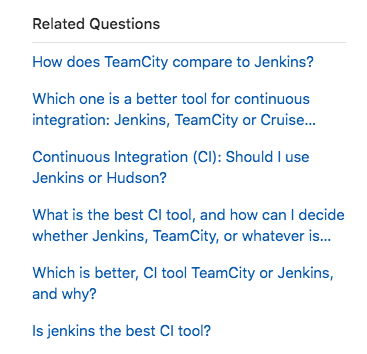
Our hypothesis is that sending people from these relevant conversations on the web to content where they can discover our clients’ solutions will be an effective way of generating both awareness and conversions — especially when we’re offering free trial signups with minimal friction to get started.
Carbon Ads
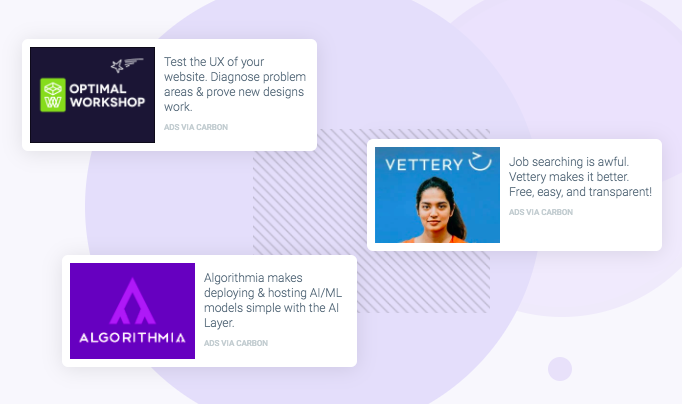
Carbon Ads is a platform focused on connecting designers, developers, and tech-savvy audiences with relevant brands. Publishers in their network are hand picked based on content quality and audience engagement.
Similar to Google Display managed placements, it allows you to select URLs for your ads to display that are hyper-relevant to technical audiences. We select blogs that are either run by developers or focused on developers and use Carbon’s very small, unobtrusive ads to facilitate discovery of our clients’ products.
Twitter Ads
Finally, our approach to Twitter Ads will revolve around understanding who the influencers are that developers follow, and using targeting based on those influencers to effectively narrow our clients’ audiences to be developer-specific.
Then we’ll combine that targeting with keywords to deliver messages to people who are both following those influencers and talking about specific topics related to our clients’ products. For example, the criteria might be to serve our ads only to people who are following specific influencers and talking about continuous integration or delivery.
For the creative, we might try both a signup-focused ad and a content-focused ad, so we have ads that appeal to devs in different stages of the buyer’s journey.
For the signup-focused ad, we might say something like, “Looking for a CICD tool? Sign up for our sandbox today.”
For the content-focused ad, we’d choose one of their highest-performing pieces of content to send traffic to and then use remarketing to reach people who didn’t sign up.
Conclusion
Focusing on organic community engagement and content marketing is an effective way to grow the user base of a SaaS product for developers over the long run. But ads can and should still be leveraged to drive supplemental traffic and conversions while companies gain momentum in organic channels.
If you create offers that fit what developers want, speak to them with direct and objective language, and deliver your messages through the channels where they actually spend time, you can acquire new users with a thoughtful combination of prospecting and remarketing ads.
And by utilizing feedback from your technical product developers at your own company, you’re likely to get on a much faster track to delivering messaging that sticks — and ultimately converts.
If you’d like to learn more about how we help B2B SaaS companies grow through paid media and SEO, schedule a Free SaaS scale session.
What you should do now
Whenever you’re ready…here are 4 ways we can help you grow your B2B software or technology business:
- Claim your Free Marketing Plan. If you’d like to work with us to turn your website into your best demo and trial acquisition platform, claim your FREE Marketing Plan. One of our growth experts will understand your current demand generation situation, and then suggest practical digital marketing strategies to hit your pipeline targets with certainty and predictability.
- If you’d like to learn the exact demand strategies we use for free, go to our blog or visit our resources section, where you can download guides, calculators, and templates we use for our most successful clients.
- If you’d like to work with other experts on our team or learn why we have off the charts team member satisfaction score, then see our Careers page.
- If you know another marketer who’d enjoy reading this page, share it with them via email, Linkedin, Twitter, or Facebook.
